It’s no secret that eating too much added
sugar can harm your health in a variety of ways, with excess sugar
consumption being linked to a variety of conditions like diabetes, heart
disease, and cancer. But even if you use little to no added sugar in
your cooking, you might be consuming way more of it than the recommended
daily amount. How is that possible? One major reason why that might be
happening is that companies add a lot of sugar to their products, but
they try to conceal it in a variety of ways to be able to pass them off
as healthy foods.
And while the maximum daily amount of added
sugar for men should be no more than 37.5 grams (9 teaspoons) and for
women it should not exceed 25 grams (6 teaspoons), 1 protein bar can
contain as much as 30 grams (7.5 teaspoons) of added sugars, which is
over the daily recommended allowance for women. Let’s investigate how it
is possible for companies to sell you junk food under the premise of
healthy food, and how you can use food labels to make smart purchasing
decisions that would promote and not harm your health.
1. They Use a Different Word For Sugar
When you want to find out how much sugar a product contains, let’s say, a
box of cereal, you usually look at the back of a cereal box and scan
the ingredients list for keywords like sugar, sucrose, glucose, and
fructose. If you don’t find those, or find them in the middle or at the
end of the ingredients list, which means that there isn’t a lot of it in
the product, you make the conclusion that it’s a healthy choice, right?
Well, not entirely, as many companies nowadays use many “alternative”
names for sugar in an attempt to deceive a consumer that is used to scan
the ingredients list before purchasing a certain product. Here is a
list of such alternative names that you should watch out for when it
comes to powdered added sugar.
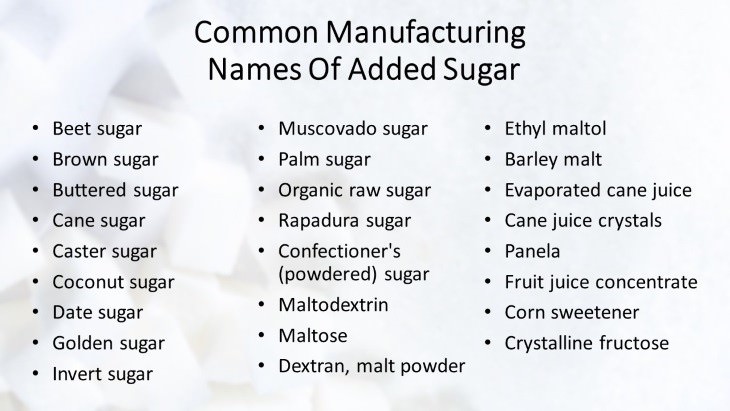
Added sugar is also often used in syrup
form rather than powdered form, in which case they commonly appear as
the following ingredients on nutrition labels.
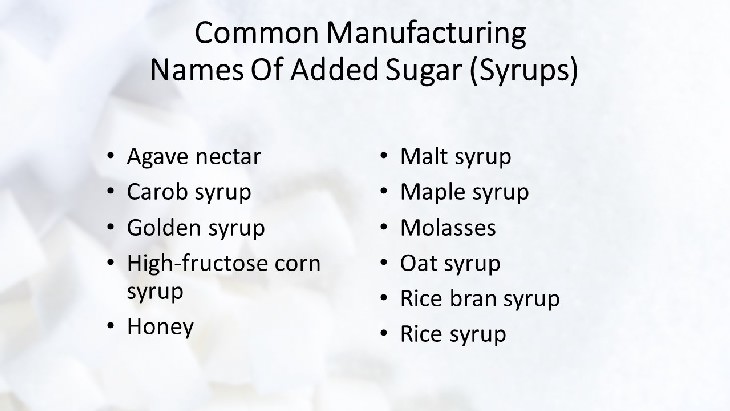

2. Adding Sugar to Things That Aren’t Sweet
You would expect to see added sugar appearing as an ingredient on a box
of cookies, but not so much on a can of tomato sauce, salad dressings,
and soups. The truth is that humans simply love sweet food because our
brains run on sugar and it’s addictive, and for companies, it’s a cheap
way of making a product tastier for consumers.
Unfortunately, all of the foods we mentioned above can actually contain a
lot of sugar, which adds up and can be the culprit behind excess sugar
consumption. For example, 100 grams of some ketchups can contain as much
as 38 grams of sugar, which is higher than the daily allowance for men.
That’s why it is always important to always check the sugar content of a
product, be it sweet or savory.
3. Adding Health-Related Claims on Product
Packaging
You’re better off completely ignoring claims like natural, zero,
healthy, low-fat, diet, and light that often appear on the packaging of
products. Instead, look directly at the label and analyze the ingredient
list. These products are often lower in fat, calories, and sugar, but
they’re often way too abundant in sugars.
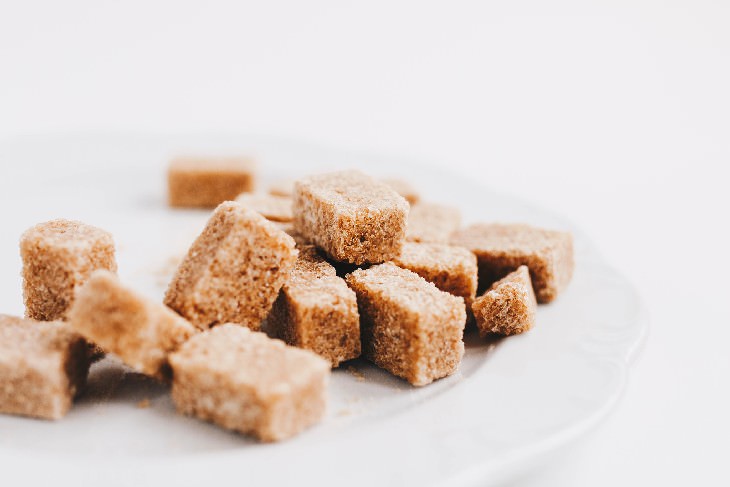

4. Using So-Called “Healthy” Sugars
Certain products use labels like refined sugar-free or contains no
refined sugar. What these labels mean, however, is that a product
doesn't contain white sugar. While it may be true that these so-called
“healthy” sugars have a slightly lower glycemic index (GI), they still
have little to no additional nutrients compared to whole foods and, at
the end of the day, they are still added sugars. A list of popular
sugars marketed as healthier can be found in the picture below.
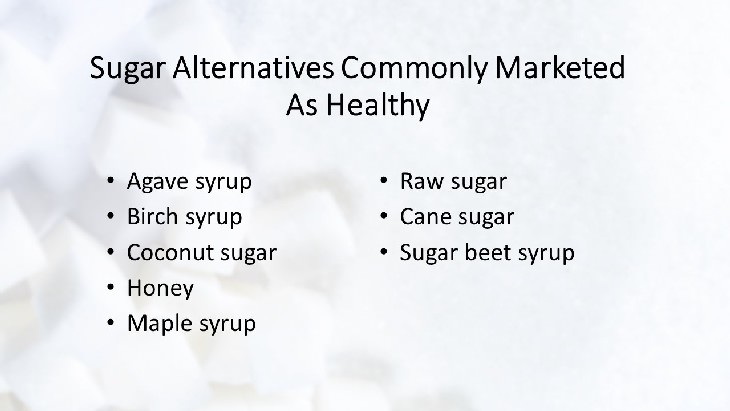

The bottom line is that like white sugar,
fructose or corn syrup, these sugars should not exceed the overall
amount of 37.5 g for men and 25 g for women. So, it doesn’t matter if
you consume 25 g of white sugar, or 10 g of coconut sugar, 10 g of agave
syrup and 5 g of honey as a woman, both equal your daily recommended
amount. That doesn’t mean that you cannot choose these alternatives, but
remember that they are just as damaging to your health as any other
sugar.
5. Using a Few Types of Sugar
As we mentioned previously, ingredients appear in any ingredients list
according to their amounts in a product, so the first ingredient is
usually the most abundant one, whereas there will be very little of the
last ingredient on the list. Companies learned to take advantage of this
regulation and often use several types of sugar in smaller amounts,
which makes them appear lower on the ingredients list.
This can trick a consumer into believing that there is very little sugar
in the product. So, if you see a few different types of sugar in the
middle or at the end of the list, know that the added amount of all
these sugars may be way higher than you expect. For example, if you look
at the picture below, you will see that this cereal uses a variety of
sweeteners, such as sugar, honey, and brown sugar syrup that appear in
different places on the list.
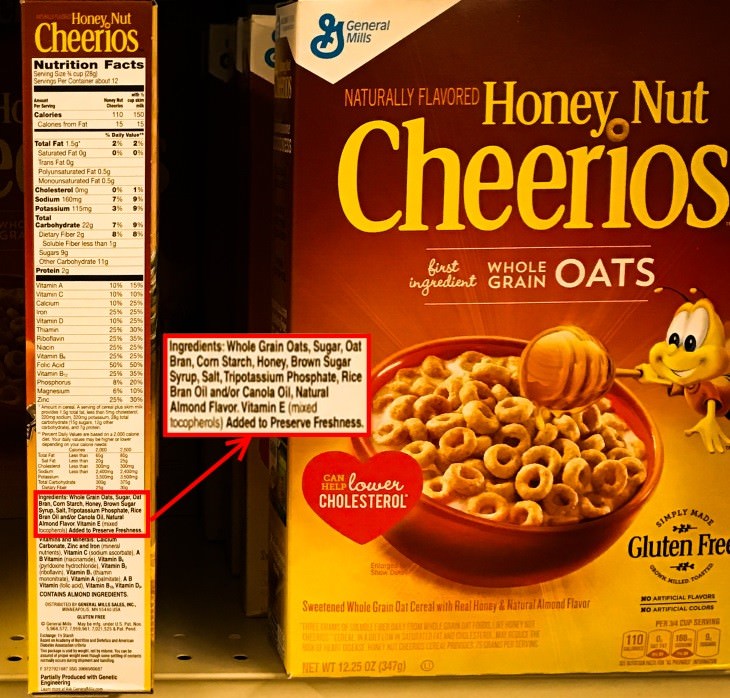

6. Not Distinguishing Between
Naturally-Occurring and Added Sugars
There is a difference between eating an orange and drinking a glass of
soda, even if both of these products contain a lot of sugar. While
products containing added sugars, like a glass of soda, do not contain
anything apart from whatever is listed on the packaging, whole foods are
packed full with fiber, vitamins, antioxidants and essential nutrients
that not only mitigate the damage caused by the sugar they contain, but
improve your health.
Ingredient labels don’t distinguish between the added and
naturally-occurring sugars, but you should keep in mind that choosing
whole, unprocessed foods is always better.
7. Changing the Nutritional Facts With Time
If you know that a specific brand makes a great low-sugar product, don’t
assume it applies to comparable products by the same brand. It is often
the case that a similar product, but with a different flavor or simply
one that is sold in a different country will not have the same
nutritional content the original did.
It is also often the case that brands
change the content of their products when they update the packaging, so
always be critical of any changes or variations in the product you know
is good, as it may actually turn out to be not so low in sugar.
8. Check the Serving Size
The last, but definitely crucial line in the nutrition facts portion of a
product is the serving size. Food companies often manipulate the
serving size of a product, making it too small to be realistic, but this
makes the product look like it’s not that high in sugar. So, for
example, 1 small can of soda that even a child can gulp down in a matter
of seconds often contains multiple servings, which means that by
drinking the whole thing you’re actually consuming double or triple the
amount of sugar mentioned on the packaging. Be careful and make smart
food purchases.